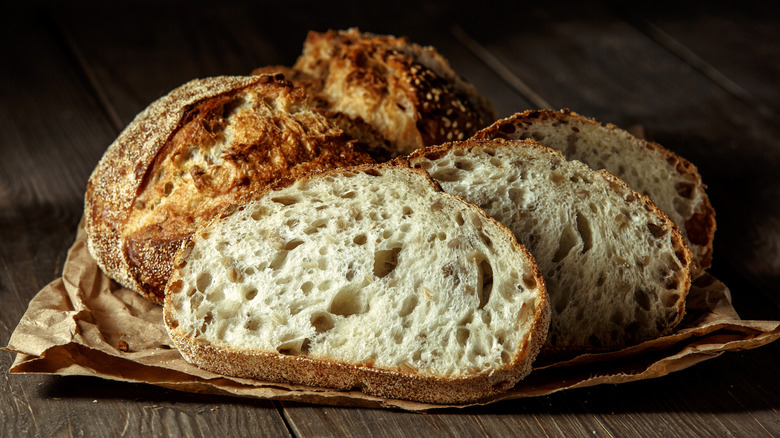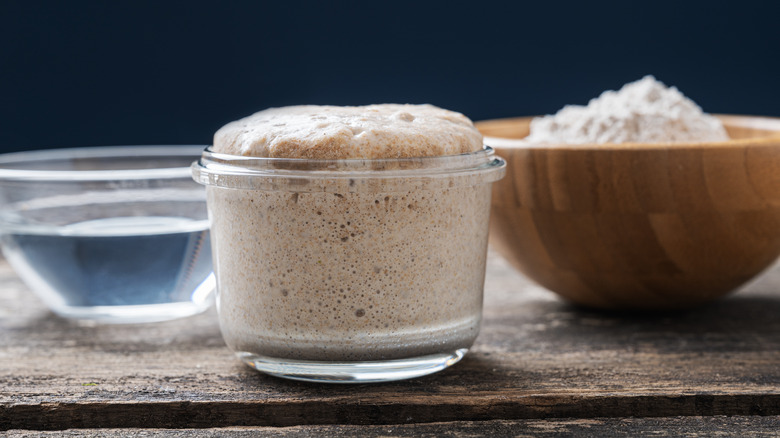The Reason Your Sourdough Bread Turned Out Funky (In A Bad Way)
Sourdough bread is one of the great paradoxes of baking. The ingredients are simplicity itself, yet the recipe feels to be full of complex sourdough trials and tribulations. Even seasoned pros will have boule mishaps, including the dreaded funky-tasting bread loaf.
To help unravel this particular sourdough conundrum, we turned to Amy Emberling, one of the original bakers and current managing partners of Zingerman's Bakehouse in Ann Arbor, MI. Emberling notes that contrary to popular opinion, not all sour tastes can be considered flavorful additions. Instead, what was once a balanced tang becomes an almost rancid sourness. The issue lies within a neglected sourdough starter, which can develop an overpowering level of acidic tang when left to ferment too long.
Luckily, this problem does have a simple preventative solution. To sidestep this off-tasting flavor, Emberling recommends constant care and regular feedings of your sourdough starter. "Feed it consistently so that you'll get the same flavor of the sour and the same degree of tang every time," she says.
Take care of your sourdough starter
First things first: how can you tell your starter has been neglected? An over-fermented starter — the kind that produces your funky-flavored bread — shows you it's hungry with an excess of liquid "hooch." Like the rotgut of the Prohibition era, sourdough hooch is alcohol, the byproduct of your natural yeast's consumption of sugar. A watery line of hooch can appear on top, in the middle, or even at the bottom of your starter, but it's always a sign that your starter is past due for a feeding. This hooch is one of the reasons your sourdough bread can take on that rancid taste, so you need to get on a schedule of regular feeding to bring your starter back in balance.
Whatever your feeding schedule, increase it by two-fold. So if you're feeding it every other day, begin to replenish it once a day. You can keep the amount of discard and replenishment roughly the same (as small or as large as you need), as the main important factor is the ramped-up timeline for feeding. This regular feeding will keep the hooch away and reduce the puckering tanginess. As Emberling notes, this bit of TLC goes a long way toward creating uniformly perfect loaves of sourdough bread.

